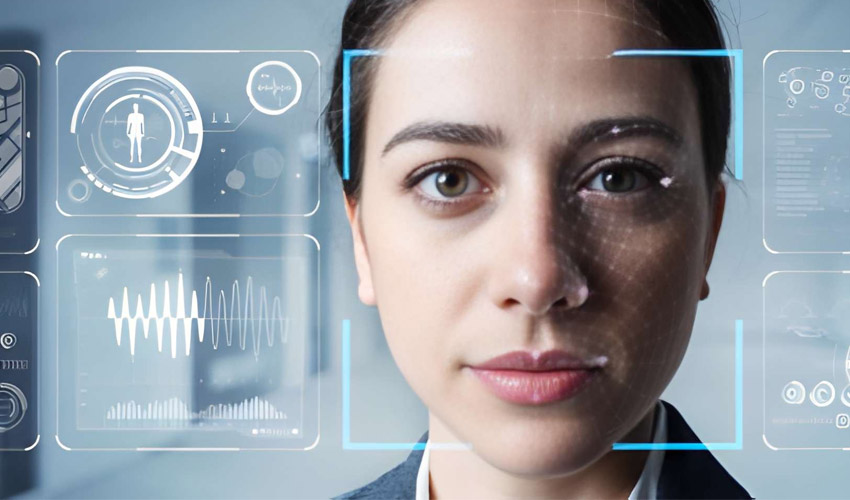Imagine unlocking your phone with a glance, paying for coffee with your fingerprint, or boarding a plane with just a smile. This isn’t science fiction—it’s the reality of biometric authentication in 2025. As we increasingly rely on our unique physical characteristics to prove our identity, biometric technology has transformed from a futuristic concept into an everyday necessity.
The numbers tell a compelling story. 84% of global consumers have used at least one biometric authentication method, with the biometric market projected to reach $68.60 billion by 2025, according to Frost & Sullivan. More than 176 million Americans now use facial recognition technology daily, and 81% of smartphones have biometrics enabled.
But here’s the catch: while 72% of consumers globally prefer face biometrics over passwords, only 5% of users in 2024 express high trust in companies’ ability to safeguard their biometric data—a dramatic drop from 28% in 2022, as reported by Cloudwards. This tension between convenience and security concerns defines the current state of biometric authentication.
What Is Biometric Authentication?
Biometric authentication uses your unique physical or behavioral characteristics to verify your identity. Unlike passwords that rely on something you know, or security tokens that depend on something you have, biometrics leverages something you are.
The most common types include:
- Fingerprint recognition – Leading with 70% global adoption (Coinlaw, 2025)
- Facial recognition – Used by 43% of consumers worldwide
- Iris scanning – Growing in healthcare and high-security applications (17% adoption)
- Voice recognition – Reaching 25% usage, powered by AI assistants
- Behavioral biometrics – Analyzing typing patterns, gait, and touchscreen interactions
The Advantages: Why Biometrics Are Booming
Enhanced Security That’s Hard to Fake
The security benefits of biometric authentication are substantial and measurable. 80% of hacking-related breaches involve compromised passwords, according to iProov’s 2025 research. Your fingerprint or iris pattern is exponentially more difficult to replicate than even the most complex password.
Consider this: behavioral analytics combined with biometrics can now stop fraud attempts within 5 milliseconds, providing real-time protection that traditional methods simply cannot match. In financial services, where 60-75% of institutions have adopted biometric authentication, this speed and accuracy translates directly into reduced fraud losses.
Unmatched Convenience
The convenience factor cannot be overstated. Over 50% of users have abandoned online purchases because retrieving a forgotten password took too long. With biometrics, authentication happens in seconds—no memorization required.
Forrester found that large US organizations allocate over $1 million annually just for password-related support costs. McKinsey reports that digital ID-enabled processes can reduce onboarding costs by 90%. These aren’t marginal improvements—they’re transformative changes in user experience and operational efficiency.
Rapid Industry Adoption
The pace of adoption across industries tells us biometrics work. In aviation, biometric technology has reduced boarding times at Los Angeles Airport by 50%—cutting 20 minutes from the process. Spirit Airlines introduced facial recognition systems that slashed check-in times by 30%.
Healthcare institutions are leveraging fingerprint and iris scanning for patient identification, with adoption rates between 50-60%. Nearly 330 million new bank accounts will be opened via digital onboarding in 2025, up from 184 million in 2020, with many using biometric verification.
By 2025, approximately 72% of hotel owners expect to use facial recognition technology to identify and engage with guests. The technology is reshaping customer experience across sectors.
Streamlined Transactions
Biometric authentication will secure $2.5 trillion worth of mobile payment transactions by 2024—a staggering 1,000% increase from the $228 billion transacted in 2019, according to Juniper Research. Over 2 billion biometric payment transactions are projected globally in 2025.
The shift toward contactless payments accelerated dramatically during the pandemic and continues to grow. The number of contactless mobile transactions secured by biometrics will increase by over 520% between 2020 and 2025.
The Disadvantages: Critical Concerns
The Permanence Problem
Here’s the fundamental issue with biometric data: if your password is stolen, you can change it. If your fingerprint is compromised, you’re stuck with it forever. This immutability makes biometric breaches uniquely dangerous.
The 2019 Suprema Biostar 2 breach exposed this vulnerability dramatically. A centralized database holding millions of fingerprint and face templates was leaked. Unlike passwords, these biometrics cannot be reset, making the breach permanently damaging for affected individuals.
More recently, in 2015, the U.S. Office of Personnel Management suffered a breach exposing fingerprint data of over 5.6 million government employees. According to Interface (2025), such compromises create long-term identity risks that no software patch can fix.
Privacy Concerns and Eroding Trust
The decline in consumer trust is striking. Concerns about misuse of biometric data increased from 69% to 88% between 2022 and 2024, according to Cloudwards. Concerns about biometric data breaches rose from 69% to 86% in the same period.
These aren’t theoretical worries. In 2024, Meta agreed to pay $1.4 billion to settle a facial recognition lawsuit with Texas, following a $650 million settlement in 2021 with Illinois over its photo-tagging feature. These cases highlight the tension between corporate data collection practices and privacy rights.
More than half of consumers say they’re worried about how their biometrics are stored and managed, and 50% express concerns about malicious actors using biometric data for impersonation, according to the Biometrics Institute 2024 Industry Survey.
Surveillance and Function Creep
Biometric systems enable unprecedented surveillance capabilities. The confiscation of biometric databases by the Taliban in 2021 provided a stark reminder that biometric data carries heightened risks for users and administrators alike, as noted by the Bipartisan Policy Center.
There’s also the risk of “function creep”—where biometric data collected for one purpose is repurposed without consent. Organizations may collect data for security but later use it for tracking, profiling, or making decisions about individuals in employment or insurance contexts.
Technical Vulnerabilities
Deepfake incidents accounted for 32% of security breaches among UK businesses in 2024, according to Interface. Only 0.1% of people can correctly identify all AI-generated content, making spoofing attacks increasingly sophisticated.
Kaspersky uncovered dozens of bugs in ZKTeco biometric terminals in 2024, including SQL injection and command execution vulnerabilities. These terminals often connect to enterprise networks, potentially exposing entire systems.
False rejection rates affect approximately 1 in 20 transactions globally in 2025. While liveness detection and infrared scanning have improved accuracy, no system is perfect.
Accuracy and Bias Issues
Biometric systems don’t work equally well for everyone. Facial recognition algorithms are 10 to 100 times more prone to false positives with Black individuals than with white individuals. Women are five times more likely to be falsely recognized than men, according to Passport Photo’s 2025 research.
RiteAid’s facial recognition system falsely tagged consumers—especially women and people of color—as shoplifters, leading the Federal Trade Commission to ban the retailer from using facial recognition for five years. These bias issues raise serious ethical concerns about widespread deployment.
Regulatory Complexity
57% of industry experts doubt that policy and regulation will keep pace with biometric technology advancements, creating a dangerous gap between innovation and governance. Different jurisdictions have vastly different standards, making compliance challenging for global organizations.
Illinois’ Biometric Information Privacy Act (BIPA) has led to multiple high-profile settlements, while other states have minimal protections. The 58% of survey respondents citing privacy and data protection concerns as the primary barrier to market growth reflects this regulatory uncertainty.
Finding the Balance: Best Practices
Multi-Layered Security
The solution isn’t choosing between passwords and biometrics—it’s combining them. Multi-factor authentication that includes biometrics plus another verification method provides depth of defense. If one layer is compromised, others remain.
Decentralized Storage
Modern biometric systems increasingly store data locally on devices rather than in centralized databases. Apple’s Secure Enclave, for example, keeps biometric data on your device, never uploading it to servers. This architecture dramatically reduces breach risks.
Template Protection
Advanced systems use non-invertible transformations—converting biometric data into mathematical templates that can verify identity but cannot be reversed to recreate the original biometric. This adds a crucial layer of protection.
Transparent Consent
Organizations must be clear about what biometric data they collect, how it’s used, and how long it’s retained. 87% of industry professionals believe extensive citizen education on data protection is key to advancing biometric acceptance, according to PhotoAid’s 2025 statistics.
The Future Landscape
Looking ahead, the biometric authentication market will continue its explosive growth. The global biometric system market is forecast to reach $83 billion by 2027, with voice recognition expected to grow from $10 billion to $27 billion—a 63% increase.
Cloud-based biometric solutions are adopted by 40% of enterprises globally for secure cross-platform authentication. AI-driven fraud detection implementations rose by 45% in 2025 across finance and payment systems.
Digital wallets with biometric capabilities dominate 72% of mobile transactions in 2025, while emerging markets in Asia-Pacific are seeing the fastest growth with a projected compound annual growth rate of 24% through 2026.
Investment in biometric technologies exceeded $2.3 billion in 2025, reflecting a 15% year-on-year increase. This capital influx will drive innovations in accuracy, security, and privacy protection.
Conclusion: Navigating the Biometric Era
Biometric authentication represents a fundamental shift in how we prove our identity. The advantages are undeniable—enhanced security, unprecedented convenience, and operational efficiencies that traditional methods cannot match. With 81% of consumers believing biometrics are a more secure verification method, the technology clearly addresses real needs.
Yet the concerns are equally legitimate. The permanence of biometric data, eroding public trust, privacy risks, and technical vulnerabilities create genuine challenges that demand serious attention. The 88% of consumers worried about biometric data misuse aren’t paranoid—they’re paying attention.
The path forward requires balanced thinking. Biometric authentication isn’t inherently good or bad—its value depends entirely on implementation. Organizations must prioritize privacy-by-design principles, invest in robust security measures, maintain transparency about data practices, and give users meaningful control over their biometric information.
For individuals, the key is informed choice. Use biometrics where the benefits clearly outweigh the risks, combine them with other security measures, and stay aware of how your data is being collected and used.
As nearly 90% of companies consider biometric authentication effective for securing data, and as billions more transactions shift to biometric verification, we’re not debating whether this technology will become ubiquitous—it already is. The question now is whether we can harness its benefits while safeguarding against its risks. That challenge will define digital security for the decade ahead.











